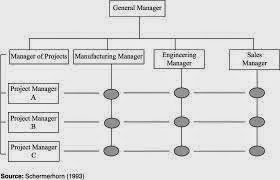Covid-19: Growth Shock, V Shaped Recession and Policy Response
1. Introduction: Growth Shock
A raging pandemic unleashed by a highly contagious COVID-19 virus has triggered unprecedented restrictions not only on the movement of people but also on a range of economic activities, and the declaration of national emergencies in the worldwide. Growing demand for urgent healthcare and rising death tolls are straining national healthcare systems. The pandemic is disrupting global supply chains and international trade. With nearly 100 countries closing national borders during the past month, the movement of people and tourism flows have come to a screeching halt. Millions of workers in these countries are facing the bleak prospect of losing their jobs. Governments are considering and rolling out large stimulus packages to avert a sharp downturn of their economies which could potentially plunge the global economy into a deep recession.
In the worst-case scenario, the world economy could contract by 0.9
percent in 2020 (Figure 1). The coronavirus outbreak has dealt a massive blow
to global activity, and the associated costs and spillovers will significantly
erode the global outlook. The pandemic also compounds other downside risks,
such as further disruptions to trade relations, spillovers from sharp downturns
in major economies, and disorderly commodity and financial market developments.
Against this backdrop, many economies are not adequately prepared to confront
the negative shocks related to the materialization of these risks.
Whereas the economic growth of Nepal in FY2020 is anticipated
to contract from pre-COVID estimate of 6.3% to 5.3% as shown in the following
figure 2. However, growth could further contract if the lower remittances,
trade and tourism, and broader disruptions caused by the COVID-19 outbreak. Economic
growth during FY21 is also likely to remain subdued due to the lingering
effects of the pandemic with some recovery expected in FY22. Therefore, the
urgent and bold policy measures are needed, not only to contain the pandemic
and save lives but also to protect the most vulnerable in our societies from
economic ruin and to sustain economic growth and financial stability.
Figure 2: Nepal's GDP growth rate at Market Price (%)
2. V-Shaped
Recessions and Predication
V-shaped recessions
are recessions that begin with a steep fall but then quickly find a bottom,
turn back around and move immediately higher. A V-shaped recession is a
best-case scenario. The recession of 1990 to 1991 and the recession of
2001—both of which only lasted eight months—are considered to be V-shaped
recessions. Firstly, a fairly sharp drop due to health shock, economic
slowdown, corporate defaults, corporate bankruptcies, as well as layoffs.
Secondly, a fairly speedy recovery may be expected using measures like support
for health system, shield people and firms, reduce financial stress and plan
for recovery by using true economic policy measures.
Figure 3: V-Shaped
Recessions
If
the virus spreads to most countries and efforts to contain the outbreak spill
into the third quarter of 2020, financial market pressures continue, commodity
prices remain weak, and domestic healthcare systems are strained, the growth
impacts will be more severe. Either way, the region is bracing for a recession. Assuming that
prior epidemics such as SARS, the 1968 H3N2 (“Hong Kong”) flu, 1958 H2N2
(“Asian”) flu, and 1918 Spanish flu all are V-shaped. Partial recovery in 2021 almost after a year which is
based on the direction of curve as shown in following diagram.
Hence, a V-shaped
scenario depicts a Covid economic shock where growth may be eventually
rebounds.
3. Long- Term policy Response
While
confronting the near-term impact of the coronavirus pandemic is the primary
focus of policy efforts, the economy eventually need to return to targeted
structural reforms that are essential to improve long-term productivity and
generate long-term growth. Specifically, reforms are needed to strengthen
governance, reassess the role of the state in the economy, improve the business
climate, and promote the appropriate diversification of commodity-dependent
economies. Weak external demand highlights the importance of policies that
expand domestic sources of productivity and long-term output growth, such as
investment in human and physical capital. Mitigating the risks associated with
climate change and other disasters, such as pandemics, highlights the need for
emergency preparedness.
The following are six
priorities need to be followed.
·
First, continue with essential containment measures and support
for health systems.
- Prioritizing health spending for testing and medical
equipment; pay doctors and nurses; make sure hospitals and makeshift
clinics can function i.e. carefully reallocating limited public
resources.
- It also means increasing the flow of resources to these countries.
That includes the flow of vital goods: we must minimize disruptions to
supply chains and, with immediate effect, refrain from export controls on
medical supplies and food.
·
Second, shield affected people and firms with large, timely,
targeted fiscal and financial sector measures.
- It includes tax deferrals, wage subsidies and cash
transfers to the most vulnerable; extending unemployment insurance and
social assistance; and temporarily adjusting credit guarantees and loan
terms.
- Some of these measures have been taken in the first
wave of policy supportive measures i.e. lifelines for households and businesses are imperative.
- Need to prevent liquidity pressures from turning into
solvency problems and avoid
scarring of the economy that would make the recovery so much more
difficult.
·
Third, reduce stress to the financial system and avoid
contagion.
- Banks have built up more capital and liquidity over
the past decade, and their resilience will be tested in this rapidly
changing environment.
- Monetary stimulus and liquidity facilities play an
indispensable role. Interest rates have been lowered in many countries.
- Central banks have activated swap lines and created
new ones to reduce financial market stress.
- Enhancing liquidity for a broader range of emerging
economies would provide further relief. Importantly, it would also lift confidence.
·
Fourth, even as we move through this containment phase, we must
plan for recovery.
- Minimizing the potential scarring effects of the crisis
through policy action now. This requires careful consideration of when to
gradually ease restrictions, based on clear evidence that the epidemic is
retreating.
- As measures to stabilize the economy take hold and
business starts to normalize, we will need to move swiftly to boost
demand. A coordinated fiscal stimulus will be essential. Where inflation
remains low and well-anchored, monetary policy should remain
accommodative. Those with greater resources and policy space will need
to do more; others,
with limited resources will need more support.
·
Fifth,
redefined the role of the state
o Governments must
invest in, and in some cases create, institutions that help to prevent crises,
and make us more capable to handle them when they arise.
o Injecting stimulus
into the economy while desperately trying to slow the spread of the disease, to
protect vulnerable populations, and to help create new therapies and vaccines.
o Governments need to
better coordinate research and development activities, steering them towards
public health goals.
o Governments need to
structure public-private partnerships to make sure both citizens and the
economy benefit
·
Sixth, enhancing the environment for growth
by strengthening governance and fostering competitive markets.
o Addressing
these weaknesses requires reforms to improve governance and the business
climate.
o Growth
was only stronger in the economy with higher levels of government
accountability
4. Concluding
Remarks
Lessons
from previous infectious disease outbreaks, as well as the experiences of the
countries that were hit early by COVID-19, clearly show that severe containment
measures, such as social distancing requirements, shutdowns of nonessential
businesses and entertainment, and school closures, are important measures in
saving lives by “flattening the curve” of infections and preventing health care
systems from being overwhelmed. Policy makers face difficult trade-offs between
the health benefits of these policies and their economic costs, however, since
the more successful the containment policies are, and the flatter the infection
curve is, the deeper the economic recession becomes. The immediate policy
priorities are bolstering health care systems to save lives, strengthening
safety nets to provide relief to households, and providing support to the
private sector to cushion the downturn and preserve jobs. To the extent fiscal
space is available, broad-based fiscal stimulus can also help lift aggregate
demand, but it will probably be more effective after the immediate crisis has
passed and business operations begin to normalize .Monetary policy can also
play an important role. Central banks should be ready to provide ample
liquidity to banks and nonbank financial institutions, particularly to small
and medium-size enterprises, which are prone to suffer more from the sharp
disruption. Broader monetary stimulus, such as policy rate cuts or asset
purchases, can lift confidence and support financial markets to offset the risk
of a sizable tightening in financial conditions, given the volatility in
markets. International coordination in monetary easing could further alleviate
the volatility.





Comments